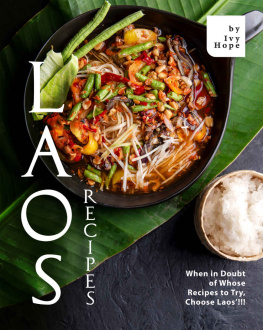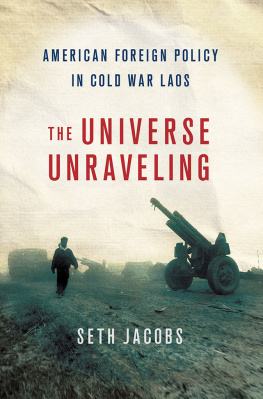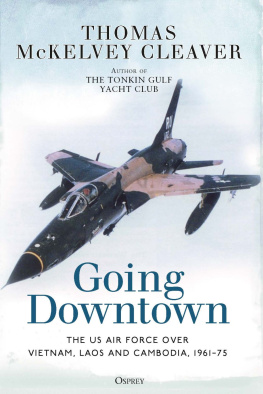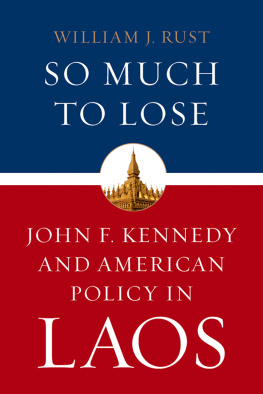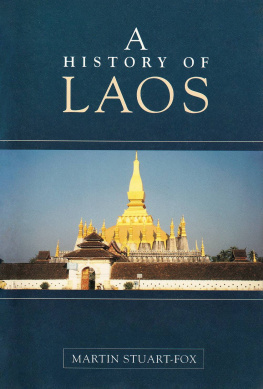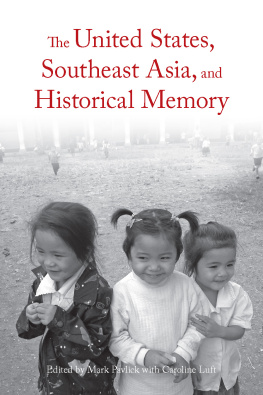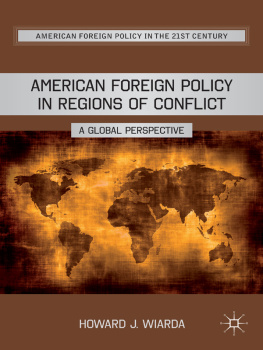Before the Quagmire
Before the
Quagmire
American Intervention in Laos,
19541961
William J. Rust

Copyright 2012 by The University Press of Kentucky
Scholarly publisher for the Commonwealth, serving Bellarmine University, Berea College, Centre College of Kentucky, Eastern Kentucky University, The Filson Historical Society, Georgetown College, Kentucky Historical Society, Kentucky State University, Morehead State University, Murray State University, Northern Kentucky University, Transylvania University, University of Kentucky, University of Louisville, and Western Kentucky University.
All rights reserved.
Editorial and Sales Offices: The University Press of Kentucky
663 South Limestone Street, Lexington, Kentucky 40508-4008
www.kentuckypress.com
16 15 14 13 12 5 4 3 2 1
Maps by Richard A. Gilbreath, University of Kentucky Cartography Lab
Library of Congress Cataloging-in-Publication Data
Rust, William J.
Before the quagmire : American intervention in Laos, 19541961 / William J. Rust.
pages cm
Includes bibliographical references and index.
ISBN 978-0-8131-3578-6 (hardcover : alk. paper)
ISBN 978-0-8131-3579-3 (ebook)
1. United StatesForeign relationsLaos. 2. LaosForeign relationsUnited States. 3. United StatesForeign relations19531961. I. Title.
E183.8.L3R87 2012
327.73059409045dc23
2012003860
This book is printed on acid-free recycled paper meeting the requirements of the American National Standard for Permanence in Paper for Printed Library Materials.

Manufactured in the United States of America.

| Member of the Association of
American University Presses |
Contents
Illustrations follow

Laos and bordering countries, 19541975

Vientiane, Laos, 1960
Abbreviations
AEC | Atomic Energy Commission |
ANL | Arme Nationale du Laos |
CAT | Civil Air Transport |
CDNI | Committee for the Defense of National Interests |
CIA | Central Intelligence Agency |
CINCPAC | Commander-in-Chief, Pacific Command |
CIP | Commodity Import Program |
CNO | Chief of Naval Operations |
DCI | Director of Central Intelligence |
DCM | Deputy Chief of Mission |
DEFCON | Defense Readiness Condition |
DRV | Democratic Republic of Vietnam (North Vietnam) |
Embtel | embassy telegram |
FAL | Forces dArme de Laos |
FAR | Forces Arme du Royaume |
FMM | French Military Mission |
HRC | High Revolutionary Command |
ICA | International Cooperation Administration |
ICC | International Commission for Supervision and Control |
ISA | International Security Affairs |
JCS | Joint Chiefs of Staff |
LHL | Lao Hom Lao (Rally of the Lao People) |
MAAG | Military Assistance Advisory Group |
NCO | noncommissioned officer |
NIE | National Intelligence Estimate |
NLHS | Neo Lao Hat Sat (Lao Patriotic Front) |
NSC | National Security Council |
OCB | Operations Coordinating Board |
OSS | Office of Strategic Services |
PARU | Police Aerial Reinforcement Unit |
PAVN | Peoples Army of Vietnam |
PBCFIA | Presidents Board of Consultants on Foreign Intelligence Activities |
PEO | Programs Evaluation Office |
PL | Pathet Lao |
PRC | Peoples Republic of China |
RLG | Royal Lao Government |
RVN | Republic of Vietnam (South Vietnam) |
SEA | Southeast Asia |
SIGINT | signals intelligence |
SEATO | Southeast Asia Treaty Organization |
USAF | United States Air Force |
USIS | United States Information Services |
USOM | United States Operations Mission |
Introduction
Interested Outside Powers
J. GRAHAM PARSONS, once a rising star among the career professionals in the US Department of State, was appointed ambassador to the kingdom of Laos in 1956 at the comparatively young age of forty-eight. Senior officials in the department considered him an outstanding diplomat whose assignment to the sparsely populated and newly independent Southeast Asian country would prepare him for more important ambassadorships in the future. After loyally serving the Eisenhower administration in Vientiane, a town he later called the administrative capital of the kingdom that no one really administered, Parsons returned to Washington in 1958 to become deputy assistant secretary of state for far eastern affairs, then assistant secretary of state for the region the following year.
When Dwight D. Eisenhowers presidency ended on January 20, 1961, Parsons was the administration official most closely identified with Laos, a country a colleague had characterized as being in a state of perpetual crisis. Compared to the ideological struggle with the Soviet Union and the Peoples Republic of China, and to the major cold war battlefields in Europe and Asia, Laos often seemed a small-scale skirmish in the fight against communism. In the last six months of Eisenhowers second term, however, Laos became a priority after a coup dtat, led by an obscure US-trained paratroop captain, evolved into a superpower confrontation that threatened to become another Korean War or worse.
Parsons later acknowledged that his association with Laos had not only earned him professional advancement but also nearly ended his career. To the new officials of the Kennedy administration, he was a symbol of ineffectual anticommunist policies in Laos and other parts of the
Parsons served in Stockholm for six years, an unusually long assignment for a US ambassador and an indication that he was out of favor with the administration of President Lyndon B. Johnson. With characteristic professionalism, Parsons performed well as ambassador to Sweden, even in the face of angry politicians and citizens whose political neutrality did not preclude angry and sometimes violent denunciations of the Vietnam War. While serving in Stockholm in the summer of 1965, he learned of a book manuscript by historian Arthur Schlesinger Jr., which unfairly represented his role in Lao affairs. The source for this information and assessment was Winthrop G. Brown, an old friend who had served as American ambassador to Laos at the end of Eisenhowers presidency and the beginning of Kennedys. The book was
Next page

